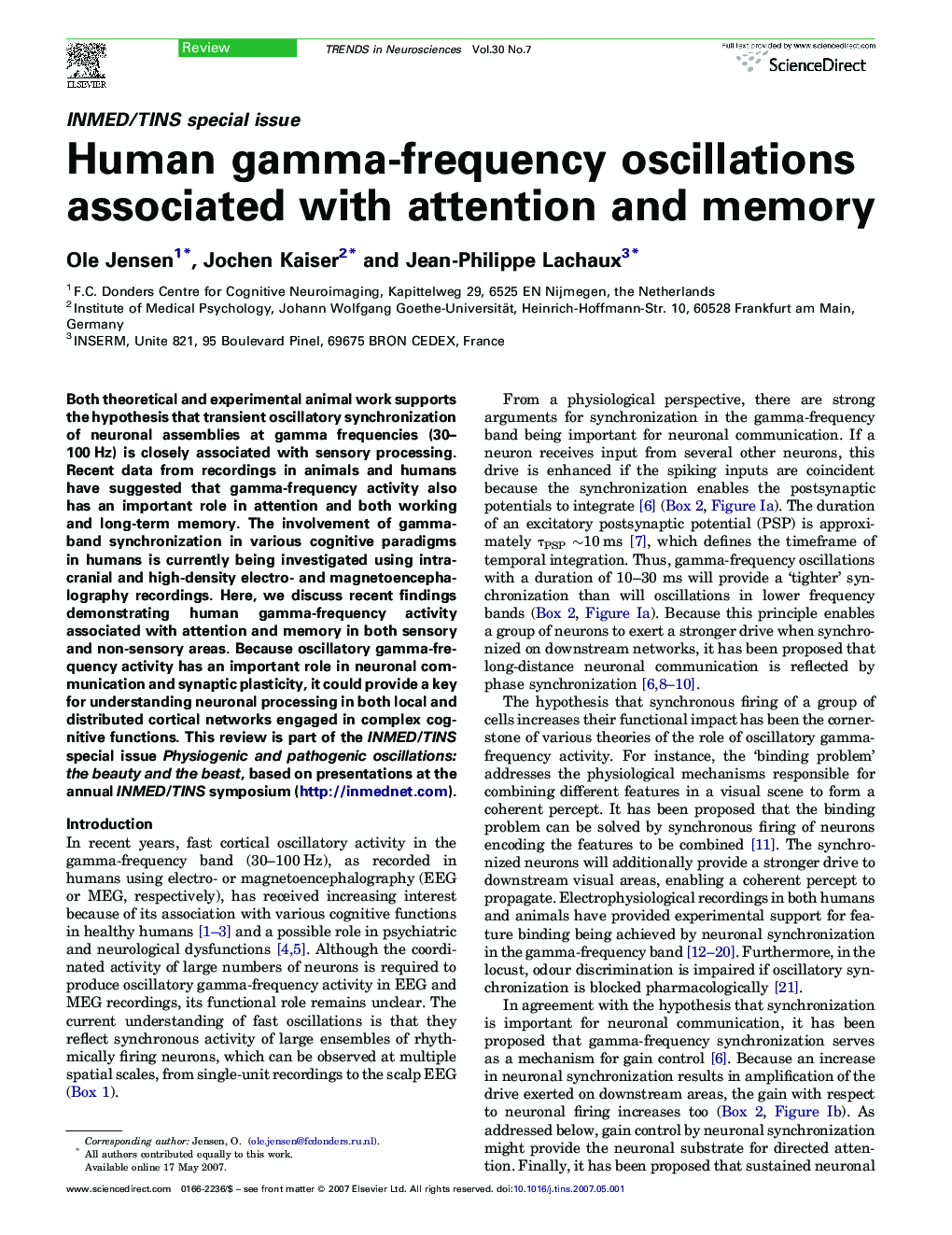| Article ID | Journal | Published Year | Pages | File Type |
|---|---|---|---|---|
| 4354809 | Trends in Neurosciences | 2007 | 8 Pages |
Both theoretical and experimental animal work supports the hypothesis that transient oscillatory synchronization of neuronal assemblies at gamma frequencies (30–100 Hz) is closely associated with sensory processing. Recent data from recordings in animals and humans have suggested that gamma-frequency activity also has an important role in attention and both working and long-term memory. The involvement of gamma-band synchronization in various cognitive paradigms in humans is currently being investigated using intracranial and high-density electro- and magnetoencephalography recordings. Here, we discuss recent findings demonstrating human gamma-frequency activity associated with attention and memory in both sensory and non-sensory areas. Because oscillatory gamma-frequency activity has an important role in neuronal communication and synaptic plasticity, it could provide a key for understanding neuronal processing in both local and distributed cortical networks engaged in complex cognitive functions. This review is part of the INMED/TINS special issue Physiogenic and pathogenic oscillations: the beauty and the beast, based on presentations at the annual INMED/TINS symposium (http://inmednet.com).
